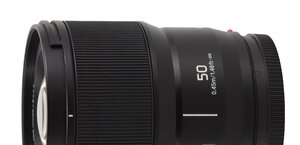Carl Zeiss Batis 25 mm f/2
8. Vignetting
| A7R II, APS-C, f/2.0 | A7R II, APS-C, f/2.8 |

|

|
It would be difficult to speak about any serious problems. By f/2.0 the vignetting is moderate, reaching 28% (−0.94 EV), by f/2.8 it decreases to 14% (−0.45 EV). What’s interesting, further stopping down of the aperture doesn’t change the level of that aberration because by f/4.0 and by f/5.6 we got respectively: 14% (−0.43 EV) and 13% (−0.42 EV).
Please Support UsIf you enjoy our reviews and articles, and you want us to continue our work please, support our website by donating through PayPal. The funds are going to be used for paying our editorial team, renting servers, and equipping our testing studio; only that way we will be able to continue providing you interesting content for free. |
- - - - - - - - - - - - - - - - - - - - - - - - - - - - - - - - - - - - - - - - - - - - - - - -
Photos shown below are the proof that on full frame the vignetting becomes far more bothersome.
| A7R II, FF, f/2.0 | A7R II, FF, f/2.8 |

|

|
| A7R II, FF, f/4.0 | A7R II, FF, f/5.6 |

|

|
At the maximum relative aperture the brightness loss in the frame corners reaches as much as 62% (−2.78 EV). It is a huge value even if a bit lower than the result of the Distagon 2/25 tested by us on the Canon 1Ds MkIII. Both Zeisses should follow the example of the Nikkor AF-S 1.8/24G which, even if faster, had the vignetting on a level of 50%.
Let’s return to the Batis, though. Its vignetting is easy to notice also by f/2.8 where it reaches 45% (−1.75 EV). By f/4.0 it still remains visible, amounting to 39% (−1.43 EV). Then the stopping down of the aperture becomes rather ineffective: by f/5.6 you get 35% (−1.23 EV), by f/8.0 the result is 34% (−1.19 EV), and by f/11 we still got 33% (−1.18 EV).
 |






